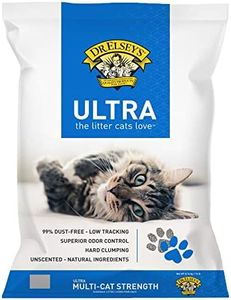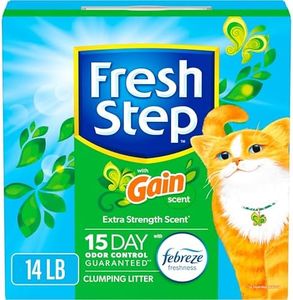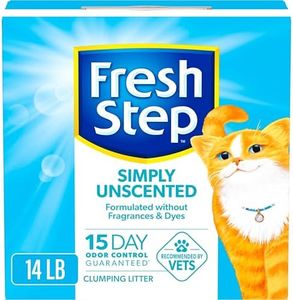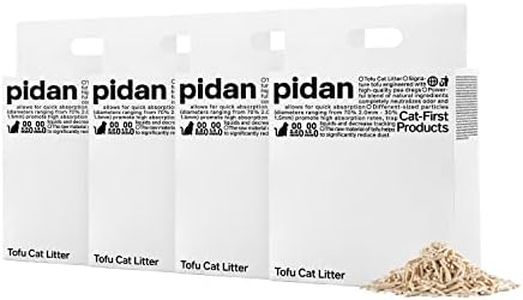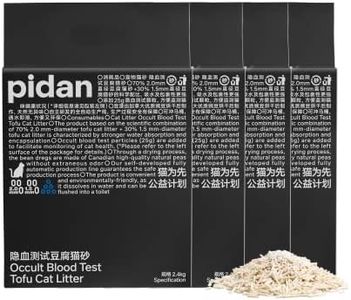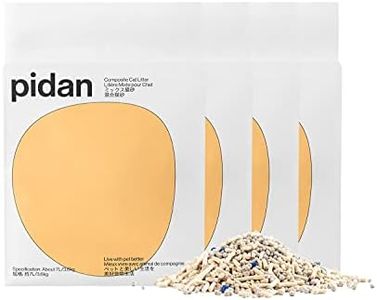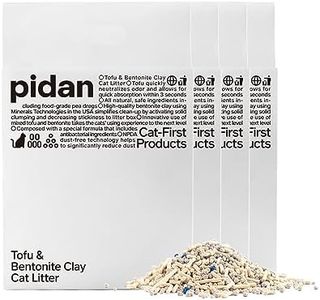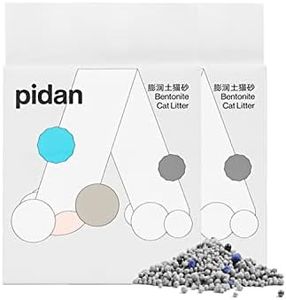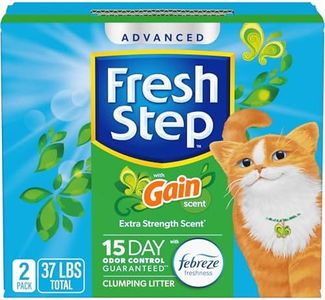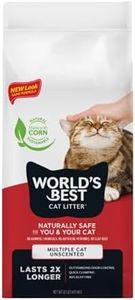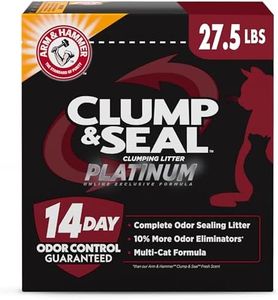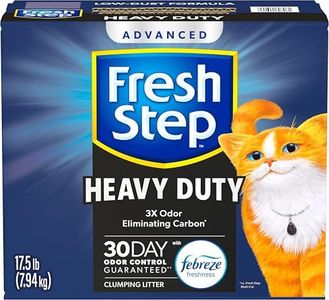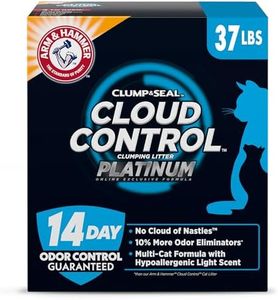10 Best Cat Litters 2025 in the United States
Our technology thoroughly searches through the online shopping world, reviewing hundreds of sites. We then process and analyze this information, updating in real-time to bring you the latest top-rated products. This way, you always get the best and most current options available.

Our Top Picks
Winner
Dr. Elsey's Ultra Unscented Clumping Clay Cat Litter 18 lb Bag
Most important from
86020 reviews
Dr. Elsey's Premium Clumping Cat Litter is highly regarded for several reasons. Made from 100% bentonite clay, it provides excellent clumping capabilities, which makes it easier to clean and maintain your cat's litter box. The litter forms hard clumps that do not break down easily, preventing moisture from reaching the bottom of the tray. This is particularly beneficial for those who want to ensure their litter box stays cleaner for longer periods.
Additionally, it excels in odor control, making it suitable for both single and multi-cat households. The unscented nature of the litter is ideal for cats and owners sensitive to artificial fragrances. One of its standout features is the 99.9% dust-free formulation, which is great for cats or owners with allergies, minimizing the risk of respiratory issues. The low-tracking granules help keep the litter contained within the box, reducing the amount of cleanup needed around the house.
However, some users might find the clay material to be heavier than other types of litter, making it less convenient to handle and pour. Furthermore, while the litter is made from natural ingredients, it is not considered the most eco-friendly option compared to biodegradable alternatives. Despite these minor drawbacks, Dr. Elsey's Premium Clumping Cat Litter provides a balance of performance and convenience, making it a strong choice for most cat owners.
Most important from
86020 reviews
Fresh Step Clumping Cat Litter with Febreze Gain Scent, Long Lasting Odor Control Kitty Litter with Activated Charcoal, Low Dust Formula, 14 lb
Most important from
84412 reviews
Fresh Step Clumping Cat Litter with Febreze Gain Scent is a clay-based cat litter that is designed to control odors effectively with its Gain scent and Febreze Ammonia Block Technology. This litter is ideal for those who prioritize odor control, as it promises up to 10 days of odor-free use. The activated charcoal helps to further neutralize urine odors, ensuring an odorless litter box experience.
The clumping formula makes it easy to scoop and maintain, as it forms solid clumps that can be removed without hassle. One of the notable advantages is its 99.9% dust-free formulation, which helps to keep your home cleaner and the air clearer, a significant plus for both cats and owners sensitive to dust. However, being clay-based, it might not be the most eco-friendly option on the market, as clay mining can have environmental impacts. The litter's low dust level also means less tracking, so you’ll find fewer granules scattered around your home.
On the downside, some users might find the Gain scent overpowering, especially if they or their cats are sensitive to strong fragrances. With a unit weight of 14 pounds, it is relatively manageable, though it might still be considered heavy for some individuals. This cat litter is best suited for households that want strong odor control and a low-dust experience, but may not be the top choice for those looking for an environmentally sustainable option.
Most important from
84412 reviews
Fresh Step Simply Unscented Clumping Litter, Fresh Step Unscented Cat Litter With Activated Charcoal Technology, 14 lb. Box
Most important from
84412 reviews
Fresh Step Simply Unscented Clumping Litter stands out for its use of activated charcoal technology, which efficiently tackles odors without relying on artificial fragrances or dyes. This is a great advantage for pet owners who are sensitive to strong scents or have cats with sensitive noses. The litter is recommended by veterinarians, which adds a layer of trust and assurance about its quality, focusing on your cat's health and happiness.
In terms of practicality, it forms tight clumps, making the cleanup process straightforward and hassle-free. Rapid liquid absorption helps maintain a hygienic environment in the litter box, which is crucial for the cat's comfort. The low dust formula is another highlight, ensuring that the surrounding area remains cleaner and minimizing airborne particles, which can be beneficial for households with allergies.
However, since this cat litter is made of clay, it might not score high in eco-friendliness, which is something environmentally conscious users might consider. While it tracks less than some, slight tracking can still occur, meaning small particles might get carried out of the box on the cat's paws. The 14 lb. box is suitable for indoor cats and provides enough supply without being too bulky to handle. Its compact packaging makes it convenient for storage. Given its unscented nature and activated charcoal for odor control, this product is well-suited for household cats and those looking for less intrusive scents in their living space. While it may not cater to eco-friendly enthusiasts, its strengths in clumping efficiency and odor control make it a strong contender in the cat litter market.
Most important from
84412 reviews
Buying Guide for the Best Cat Litters
Choosing the right cat litter is essential for both your cat's comfort and your convenience. The right litter can help control odors, reduce tracking, and make cleaning easier. When selecting cat litter, consider your cat's preferences, any allergies or sensitivities, and your own needs for maintenance and odor control. Here are some key specifications to consider when choosing cat litter.FAQ
Most Popular Categories Right Now


